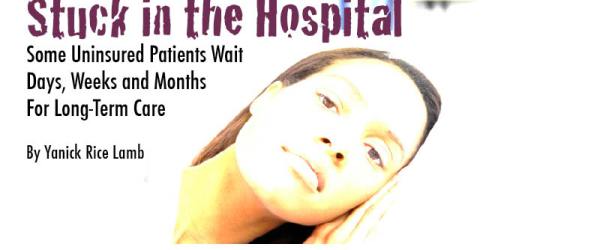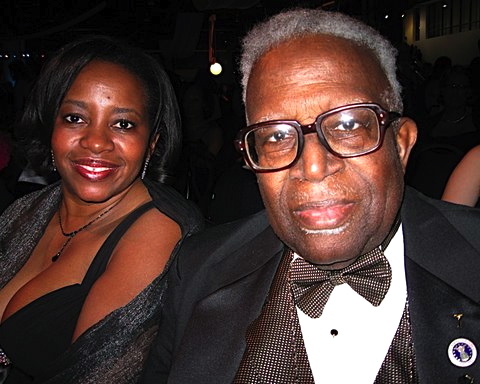by Yanick Rice Lamb | Dec 15, 2015 | Book Chapters |
CHAPTER 14 MAGAZINES AND CONSUMER LIFESTYLE: ESTEEM AND ENJOYMENT, INFLUENCE AND APPETITE As published in The Routledge Handbook of Magazine Research: The Future of the Magazine Form Yanick Rice Lamb The U.S. edition of Vogue magazine is a bible of consumptive behavior. Its pages, which may range from as few as 130 to more than 900 per issue, are filled with the gospel of Anna Wintour on everything from fashion to politics. While many magazines place five or more cover lines to gain attention on newsstands, Vogue used only three on the cover of its annual Power Issue in March 2009. That is all the world’s leading fashion magazine needed with its iconic cover girl and a main cover line that boldly stated, “MICHELLE OBAMA: The First Lady the World’s Been Waiting For.” The other two cover lines read: “Spring Fashion Special: Every Look That Matters” and “Super Powers! Queen Rania of Jordan, Carla Bruni-Sarkozy, Melinda Gates.” It is the perfect combination. Obama is wearing a sleeveless magenta silk dress by one of her favorite designers, Jason Wu, in a portrait that strategically showcases her much-debated toned arms,[1] shot by one of Vogue’s principal photographers, Annie Leibovitz,[2][1] at one of the nation’s landmark hotels, the Hay-Adams in Washington, D.C., for what Vogue describes as a “historic sitting” just before the first Inauguration of the first black president of the United States.[3] As Sammye Johnson and Patricia Prijatel note in The Magazine from Cover to Cover, “Magazines are lively and engaging societal resources, affecting the world around them and, in turn, being affected themselves by that world.”[4] A prime example of the...

by Yanick Rice Lamb | Nov 11, 2014 | Articles, My Work |
Todd Shurn braces his mother from behind, her arms resting on his as they shuffle into a restaurant in lockstep. Alice Shurn is frail and a fall risk, but she has no chance of hitting the ceramic tile floor. Her only son is determined to keep her safe. It’s what he has done day after day for nearly four years. It doesn’t matter to Shurn that he’s a single man in a vibrant city like Washington, D.C. When friends try to nudge him out of the three-bedroom house that he shares with his mother for a night on the town, he usually declines. His world orbits around his mother, and he’s OK with that. Their lives are in lockstep. “My life is dedicated to making her happy,” Shurn says. “The loss of my personal freedom — I’ve accepted that. I can’t do anything.” Men like Shurn are not as rare as they used to be, but they are still in the minority when it comes to caregiving. Only a third of caregivers are men, according to a study by the National Alliance for Caregiving and AARP. Men are less likely to be the main or only person in this role. They’re less likely to be involved with personal care and more likely to pay for it. Not Todd Shurn. He has a sister in Atlanta — more than 700 miles from their family home in Benton Harbor, Mich., and she has two children. So, Shurn does it all with the help of an aide who relieves him when he goes to work at Howard University, where he’s an associate...

by Yanick Rice Lamb | Jun 24, 2014 | Articles, Websites |
Samantha Hawkins marked the seasons of 2010 from a hospital bed at Montefiore Medical Center in the Bronx. She was admitted in the spring for 83 days, came out for two weeks in early summer, and returned for five and a half months spanning fall and winter. Finally, Hawkins went home for the holidays on Dec. 21. For her family, the homecoming was a Christmas miracle. At times, her relatives thought she might not make it, said her mother, Lula Hawkins. They held her hands, praying and shoring up each other through one complication after another from kidney disease, congestive heart failure, diabetes and a mysterious inflammatory ailment finally diagnosed as sarcoidosis. “That’s when things started going downhill,” said her older sister, Gwen Cooper. Hawkins has endured a 10-day coma, three mini-strokes, three bouts of pneumonia, plus surgery in August to implant a heart pump. Despite her list of ailments, part of what kept the 45-year-old stuck in the hospital was her lack of insurance. Once upon a time, Hawkins had medical coverage as a housekeeper at a hospital in Westchester County, New York. After she left that job three years ago, she took out a policy on her own, but then the insurance company dropped her. When Hawkins ended up at Montefiore, weeks turned into months as she lay in a hospital bed with no way to cover her stay there or her next level of care. In the meantime, the hospital absorbed her bill while trying to help her find a way to pay for nursing care at her mother’s apartment or for long-term care at a facility willing...

by Yanick Rice Lamb | Jun 23, 2014 | Books |
Sibling rivalry was never really a problem for me, but all that changed when my father stood me up for Thanksgiving. On the eve of Turkey Day, I developed a case of Obama envy. You’ve heard of “outside children?” Well, President Barack Obama has an outside family. He has two dads: Barack Hussein Obama Sr. and a surrogate, William Radford Rice, the father he “stole” from me during his first run for the White House. Daddy Rice helped him get there. Like any good father, he always believed that Barack was “The One.” He talked about him incessantly and told everyone he would become the first black president of the United States. Daddy had been saying this long before Barack’s run for Congress, breakout speech at the Democratic National Convention in 2004 and radio rebuttal to one of President Bush’s weekly radio spiels. After Barack blindsided Hillary Clinton and John Edwards during the Iowa Democratic Caucuses in early 2008, it was on. You couldn’t tell Daddy a thing about any other presidential candidate. Daddy loved to debate, and Barack had given him more ammunition to shoot holes into any political argument. It was all Barack, all the time. He was never home when I called him, especially after he helped to open my brother Barack’s campaign office in Albany, Georgia. Small in stature at 5 feet, 4 inches, Daddy was gifted with an outsized personality, a giving, enthusiastic heart, and a warm, ready smile. Although he was pushing 80, no one worked harder campaigning for Barack in Southwest Georgia. Fellow campaign volunteers described him as a tireless worker...
by Yanick Rice Lamb | Jun 19, 2014 | Journals, Teaching |
Publication No. 11 Refereed Journal Article Title: Teaching Converged Media Through News Coverage of the 2008 U.S. Presidential Election and Inauguration, Asia Pacifica Media Educator, 20, 2010, 91-102. Author(s): Lamb, Yanick Rice; Sturgis, Ingrid; and Fancher, Charles B. Published by the Asia Pacific Media Educator, a refereed journal published annually by the School of Journalism and Creative Writing at the University of Wollongong, NSW, Australia Role I helped to conceive, develop and execute coverage of the 2008 presidential election and 2009 inauguration. On Election Day, we worked in the Converged Media Lab from 7 a.m. Tuesday until nearly 4 a.m. Wednesday, when our lead reporter updated her article on President-Elect Barack Obama. We conducted a similar, but smaller operation for the inauguration. I later co-authored this research paper with journalism faculty at Howard University. This project also helped to set the stage for our 2012 presidential coverage and our midterm election coverage in 2014 Scope Upon graduation, this new generation of journalism students will work in converged newsrooms that operate on a continuous news cycle. The converged media coverage of the election and the inauguration illuminated the critical importance of hands-on teaching and guiding students through the complexities of how to use of social media and other eeb-based tools as effective, ethical journalists. Students were required to think critically, work collaboratively and engage in entrepreneurial and innovative problem solving. The projects offered students deadline driven, real-life experiences with people of different backgrounds and cultures – often for the first time – and allowed them to directly experience reporting diverse points of view. Although internships also provide practical experience, there...
by Yanick Rice Lamb | Jun 18, 2014 | Articles |
11. Publications Major Productions Research and development of FierceforBlackWomen.com, health and wellness website fills a void and addresses disparities by targeting African-American women age 35 and older; finalist for grant from the International Media Women Foundation Research and development of Fully-Connected.com, website fills a void by connecting people of African descent throughout the diaspora with a focus on bridging gaps and stereotypes in the United States; finalist for grants from J-Lab, International Media Women Foundation and UNITY/Ford Foundation Research and development of 101 Magazine and website. I have conducted extensive research on the state of diversity in magazine publishing, magazine journalism curriculum at peer institutions, new magazine launches, and the various types of magazines targeted to college students and other young adults. As I result, I conceived an idea to develop a self-sustaining publication that would combine research and experiential training to prepare diverse students for all facets of magazine publishing, which is far less integrated than newspapers, television and radio. This venture would also help address the needs of the growing number of students majoring in print/online journalism, broadcasting, advertising, public relations, business, law and other areas who are interested in starting or working for magazines. After launching online, the general-interest magazine made its debut in print at the end of Spring 2011. The students are off to a good start. They are gaining hands-on experience in developing an international business targeted to a multicultural audience of undergraduate and graduate students between the ages of 18 and 29. The premiere issue won first place as Best Student Magazine in Region 2 of the Society of Professional Journalists. The...




Recent Comments